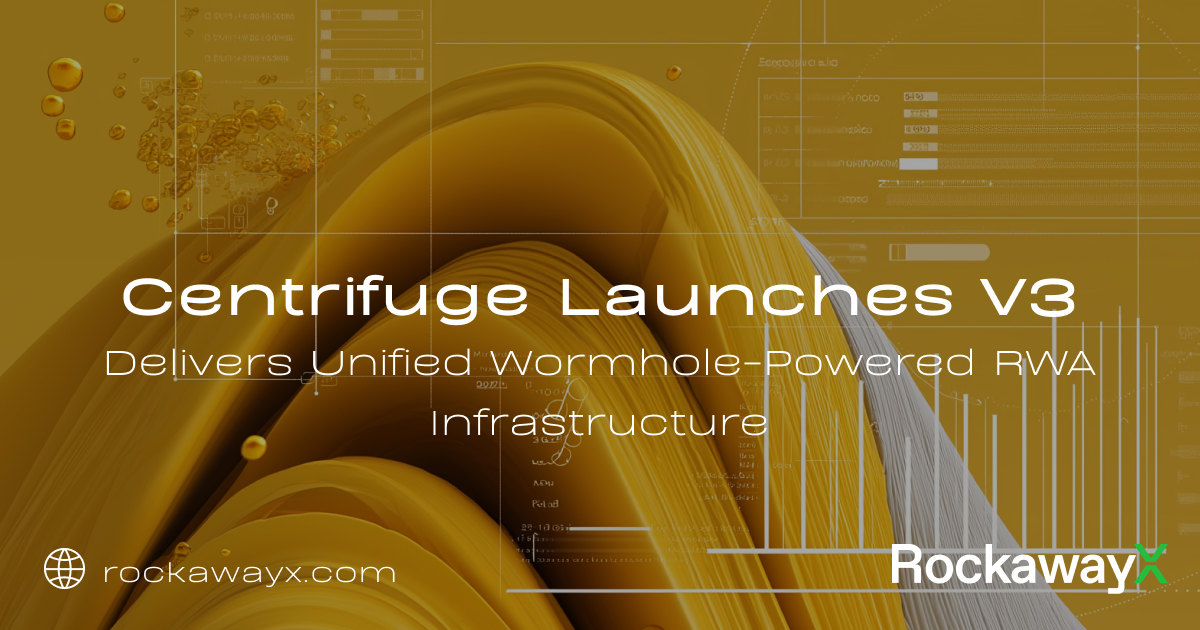
Today, Centrifuge launched Centrifuge V3, a major upgrade to its real-world asset protocol that redefines how asset managers and allocators operate onchain. Now live across six EVM chains—Ethereum, Plume, Base, Arbitrum, Avalanche, and BNB Chain—Centrifuge V3 introduces a unified environment for managing tokenized assets, regardless of where capital originates.
The launch follows a series of major milestones for Centrifuge, including winning the $1 billion Spark Tokenization Grand Prix, partnering with S&P Dow Jones Indices, and onboarding Janus Henderson’s flagship CLO strategy with a $1 billion allocation from Sky via Grove.
Powered by Wormhole’s cross-chain infrastructure, the release also completes Centrifuge’s migration to the Ethereum ecosystem.
A Unified Layer for Cross-Chain Asset Management
Centrifuge V3 introduces a chain-agnostic architecture that transforms how funds are structured, managed, and distributed onchain. With chain abstraction built into the core infrastructure, asset managers can now launch and operate tokenized funds from a single interface and allocators can invest seamlessly from any supported EVM chain. Liquidity is no longer siloed; capital can move freely to meet demand, without the friction of bridging or fragmented tooling.
This infrastructure is powered by Wormhole, which enables interoperability between ecosystems through institutional-grade messaging and routing. The result is a unified liquidity layer that supports modular, composable asset strategies and removes the technical overhead previously required to scale across chains. For institutional players entering tokenized markets, Centrifuge V3 offers a platform that meets both operational and regulatory expectations while unlocking new use cases for onchain capital.
Modular Infrastructure for the Next Generation of Tokenized Funds
V3 introduces a modular architecture for the full lifecycle of onchain asset management. Asset managers can design and deploy tokenized strategies with flexible components that support a wide range of assets, including private credit, tokenized equities, and native onchain instruments.
The protocol offers valuation flexibility with support for multiple pricing methodologies, including oracle-driven models. This enables asset managers to implement liquidity management tools, risk segmentation, and fund governance features tailored to their investment strategy, all within a composable framework built for scale.
Centrifuge V3 also enables both synchronous and asynchronous asset composability. Synchronous execution allows for instant settlement and real-time portfolio updates, while asynchronous workflows provide operational efficiency across back-office and accounting layers. This hybrid model ensures that institutional-grade funds can operate with the speed and predictability required by modern capital markets.
“Centrifuge V3 is the infrastructure for the next generation of financial markets. This launch is the culmination of almost a year of building, auditing, and validating. By going live across the most secure and scalable ecosystems in DeFi, we’re unlocking utility, liquidity, and accessibility for tokenized assets.” – Bhaji Illuminati, Co-Founder & CEO of Centrifuge
A Foundation for Institutional-Grade Multichain Finance
Centrifuge V3 arrives as institutional interest in tokenized assets continues to accelerate. By aligning with Ethereum and launching across six key ecosystem chains, Centrifuge positions itself at the center of onchain capital markets. The migration reflects where real-world asset liquidity already resides and provides the flexibility, interoperability, and composability that institutional managers increasingly require.
With this release, Centrifuge establishes a foundation for open, programmable infrastructure that meets the evolving needs of both traditional finance and decentralized markets. As demand for scalable, cross-chain fund structures grows, V3 sets a new standard for how tokenized assets are issued, managed, and deployed across the broader financial system.